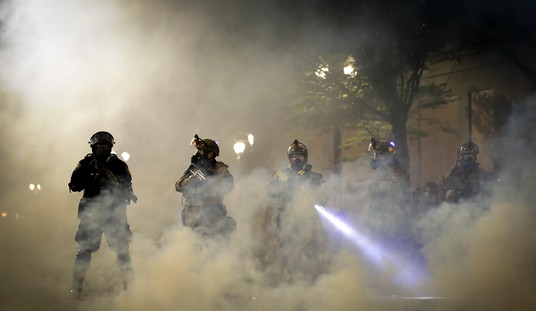Due to the talk about a possible independent candidate entering the race, a question needs to be asked. Can an independent candidate win? This is not intended to be an analysis of any individual candidate’s chances or even if an independent run should be made. I want to simply look at the historical performance of independent/third party bids and draw a conclusion from this data on whether a challenge can succeed.
For purposes of this analysis, I am going to look at the Fourth Party System (beginning in 1896) forward. Going back into previous party systems has interesting historical value, but little relevance for our current political landscape. In the period since 1896, there have been four Presidential races that featured at least 3 serious candidates. I am defining a serious candidate as one who won a popular vote percentage of over 10%. The serious challenger elections include 1912, 1924, 1968 and 1992. In addition to the four cycles above, there are four other elections where a third candidate won a popular vote percentage of more than 5% and/or won significant electoral votes. These other challenged elections include 1948, 1960, 1980, and 1996. Without getting at least 10%, success cannot be achieved other than being a spoiler. For this analysis I will focus only on races where the independent candidate received at least 10% of the vote.
The Election of 1912
The Election of 1912 was the most successful election for a third party or independent candidate by finishing position. Teddy Roosevelt’s Progressive (or Bull Moose) Party finishing second in popular vote and second in the Electoral College in a four-way contest. Roosevelt led the progressive wing of the Republican Party and challenged the incumbent Republican President, William H. Taft. Taft won the nomination at the convention amid much disagreement and infighting. Roosevelt led a walkout and formed the Progressive Party. The election results are illustrated below.

A look at the state by state results show that a small shift in the vote percentage of 5%, even when credited to the closest runner up (Roosevelt or Taft), would not have changed the final result of the election. A mix and match 5% shift, would have resulted in an electoral vote count of 341, 141 and 49. It is interesting to note that Wilson received a smaller popular vote percentage than three of the last four Democrat candidates, including finishing behind William Jennings Bryan in all three of his runs. Only Alton Parker performed worse than Wilson in 1904.
Wilson dominated the old south with the vote being reasonably split among the three over the rest of the country. The vote percentage between Roosevelt and Taft was too close to enable either to win or to send the election to the House of Representatives.
The Election of 1924
The Election of 1924 saw a race with both major parties’ nominees being generally conservative. The Progressive Party nominated LaFollette as a progressive alternative. Incumbent President Calvin Coolidge won easily in the popular vote and in the electoral vote by dominating both candidates.

The results when allowed a 5% shift, would have still resulted in a large Coolidge win with only 30 electoral votes changing hands for a revised count of 352, 157 and 22. Davis dominated the old south and performed poorly elsewhere. LaFollette was strongest in the Midwest and West. Coolidge dominated the map outside of the old south.
The Election of 1968
The Election of 1968 saw the Republicans turn to a well-known, steady hand in Richard Nixon. Nixon began the race as the frontrunner and fought off various challengers or potential challengers. He finished second in the popular vote (behind Ronald Reagan), but with a large lead in the delegate race. Needing just a few more delegates, Nixon was assisted by Strom Thurmond to win on the first ballot. Reagan and the third place candidate, Nelson Rockefeller, had intended to join forces to stop Nixon, but failed after Nixon won the support of Thurmond.
Incumbent President Lyndon Johnson sought a second full term. The anti-war movement in the Democrat party and Johnson’s own personality had weakened him to the point where Eugene McCarthy came close to defeating him in the first primary in New Hampshire. Shortly thereafter, Robert Kennedy entered the race. For a variety of reasons, Johnson withdrew from the contest. Hubert Humphrey, the sitting Vice President, entered the race using favorite son stalking horses in primaries and lobbying for delegates in states without primaries. McCarthy and Kennedy battled over the primary states until Kennedy was assassinated following the California primary. The anti-war vote never consolidated and Humphrey was able to win the nomination on the first ballot.
The Democrat National Convention featured violent riots and controversial anti-riot measures by the Chicago police. The party was consumed with in-fighting as members supported either the protestors or the police. Humphrey was weighed down by Johnson’s unpopularity and blowback from both sides of the riots.
The American Independent Party (formed in 1967) nominated George Wallace as the Presidential candidate. Wallace had a national reputation as a no-nonsense populist and supporter of segregation. Wallace’s goal was to prevent Nixon or Humphrey from winning the Electoral College and gain leverage as the kingmaker.
Nixon campaigned as a law and order candidate. He relied on his experience and the discord in the Democrat Party. Humphrey struggled to gain the support of the anti-war vote and the continued anti-war and race riots kept the population uneasy. Wallace was very strong in the South and also did well in the Midwest among blue collar workers. Wallace polled in the low 20’s before some missteps by his running mate moved some of his support back to Humphrey. The results are listed below:

An incredible 9 of the 13 states won by less than 4% were won by Nixon. The election would have been thrown to the House with a slight shift in the vote in any combination of various states. Humphrey could have won with as small of a shift as California (3.08%), Ohio (2.28%) and one other state. If the results are shifted by a net gain of 2.28% for Humphrey from either from Nixon, Wallace or a higher base turnout, the electoral count would be revised as follows:

Just a small shift in the result of the race would have thrown the vote to the House of Representatives. Wallace was able to win enough electoral votes that a close election breaking the right way would have accomplished the desired effect, without requiring a significant increase in Wallace’s support. The independent and base turnout votes can easily vary by a few points from cycle to cycle depending on the mood of the electorate, economy, issues, candidates, etc. A few more breaks for Wallace or Humphrey and the election would have been decided in the House in 1968. The House was controlled by Democrats, but Wallace may have held enough state delegations in the south to be the kingmaker between Nixon and Humphrey. It is unlikely, given Wallace’s regional appeal, that he could have convinced enough state delegations to vote for him to win.
The Election of 1992
Though incumbent President George H.W. Bush was seeking reelection, he received a challenger in populist Pat Buchanan. Buchanan never seriously challenged for the nomination, but he demonstrated Bush’s weakness with blue collar voters and conservatives. The Democrat Party nominated Bill Clinton after a crowded primary and the faltering of one frontrunner after another. The unpopularity of Bush, poor economy, scandals of Clinton and general dissatisfaction with the direction of the country, led eccentric billionaire Ross Perot to enter the race as the head of the Reform Party. Perot jumped out to a lead over Bush in second and Clinton in third in the polling for several months before dropping out of the race. Clinton then surged to a lead after the Democrat convention before Perot reentered the race. Ultimately, Perot was unable to win any states and finished second in only two states. The results can be seen below.

There is disagreement about the impact of Perot on the race. Perot likely did not cost Bush the election. Exit polling reflected a fairly even split among Perot voters, but ultimately there is no way to know for sure. Bush would have had a hard climb to overcome the Clinton electoral advantage. A total of 17 states were decided by 5% or less, 11 won by Clinton and 6 won by Bush. If Bush had finished with a net gain of 5% and won all 11 states in this group from Clinton, he would have won the election. This shift would have required a margin of 12% of the 19% Perot vote, or an increased base turnout to assemble this coalition.
We can never know what would have happened had Perot not left the race. Perot did better in terms of voting percentage than any other third candidate since 1912, but had less impact than Wallace in 1968. Perot was unable to carve out a geographical area of strength in order to win electoral votes.
Conclusions
Through four contests we see mixed results, with none being successful in either throwing the election to the House or providing victory for the independent candidate. In 1912 a personality and power split directly led to the election of Woodrow Wilson, a spoiler result. In 1924, an ideological underrepresentation of progressives led to an effort with no impact on the results due to facing a popular incumbent and good economy. In 1968 an ideological, cultural and geographic dissatisfaction led to a strong electoral finish, costing the Democrats the election and nearly pushing the race to the House of Representatives. In 1992 voter dissatisfaction led to a strong popular vote showing with likely no impact on the final result of Clinton’s election.
Basic math tells us that in order to succeed in doing something other than being a spoiler, an independent candidate has to win states. Winning states requires geographic strength and not just a large chunk of popular support. An across the board 20% popular vote is worthless unless it can be concentrated enough to win in several states. Two of the four strong independent runs succeeded in winning significant electoral votes.
An independent run also needs unpopular major candidates in order to have success. Otherwise, the effort is futile. History shows us that a strong independent run can have success. A result throwing the election to the House is very realistic and almost happened in 1968 and might have happened in 1992 had Perot stayed in the race without taking a hiatus. An outright win appears to be very improbable based on the historical evidence.
This cycle has unpopular major party candidates, although neither is an incumbent. All strong independent runs occurred when there were significant ideological or personality fights in at least one party. This cycle, we have that in both parties. Based on history, a strong independent run has a significant chance of getting the election to the House of Representatives in the current political environment, if the necessary factors come together. This conclusion is independent of the specific challenges of fielding a strong independent candidate this cycle, only judging whether a strong candidate could succeed. Yes, success is achievable by a strong independent if winning means preventing an Electoral College majority. No, success is not achievable if it means a direct Electoral College win.
An independent candidate this cycle has to be “strong” in order for this analysis to apply. That includes getting the message out, fundraising, strong early polling, debate acceptance and ballot access. Can a specific person or anyone become a strong candidate at this point in the cycle? That is a question for another diary.














Join the conversation as a VIP Member